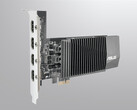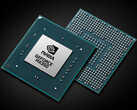(April 15, 2020 update: We've added in-house benchmarks on the RTX 2070 Super Max-Q and RTX 2080 Super Max-Q courtesy of the latest Gigabyte Aero 17 and Acer Predator Triton 500, respectively, to see how these GPUs officially line up with the existing SKUs. Users can expect the RTX 2070 Super Max-Q to perform like the RTX 2080 Max-Q and the RTX 2080 Super Max-Q to be 12 to 14 percent faster than the RTX 2070 Super Max-Q.)
During the Pascal generation, Nvidia offered the GeForce GTX 1060 Max-Q, GTX 1070 Max-Q, and GTX 1080 Max-Q GPUs in 60 - 70 W TDP, 80 - 90 W TDP, and 90 W - 110 W TDP ranges, respectively. In contrast, the latest Turing RTX 2060, RTX 2070 Max-Q, and RTX 2080 Max-Q are each in the 80 - 90 W range to allow for more flexibility in laptop designs from OEMs. This leveled approach is the major reason why manufacturers like MSI and Razer are able to offer all three RTX GPUs in the GS65 and Blade 15, respectively, whereas this would have been impossible with Pascal GPUs.
A key drawback to the strategy, however, is that the raw performance differences between each successive GeForce RTX SKU are rather minor. As an example, jumping from the RTX 2060 Max-Q to the RTX 2060 brings just 3 to 6 percent faster performance while jumping from the RTX 2060 to the RTX 2070 Max-Q is another 5 to 6 percent only. In fact, their differences are so small that there are instances where a regular RTX 2060 laptop like our Walmart EVOO can actually outperform a more expensive RTX 2070 Max-Q model.
The two largest performance gaps are between the RTX 2070 Max-Q and RTX 2070 at 17 percent and RTX 2080 Max-Q and RTX 2080 at 23 to 28 percent. Our graphs below illustrate the average performance gain between each mobile Turing GPU more concisely.
The small advantages from each step up mean that there will be very little breathing room for the GeForce Super Max-Q GPUs to be impactful. The GeForce 2070 Super Max-Q, for example, will have to offer a performance level between that of the RTX 2080 Max-Q and RTX 2080 at the very least. The RTX 2080 Super Max-Q would then have to perform even faster than the standard RTX 2080 or else it would perform too closely to the RTX 2070 Super Max-Q. Otherwise, users can just purchase a regular RTX 2070 or RTX 2080 Max-Q instead. If the gains aren't large enough, then the newer Super Max-Q lineup could risk confusing buyers trying to decide between Max-Q, non-Max-Q, and Super Max-Q laptops.
Models sporting GeForce Super Max-Q GPUs are expected to launch in the coming months. As usual, we'll have to test a handful of retail units to grow our sample size before laying a verdict on the series.
























